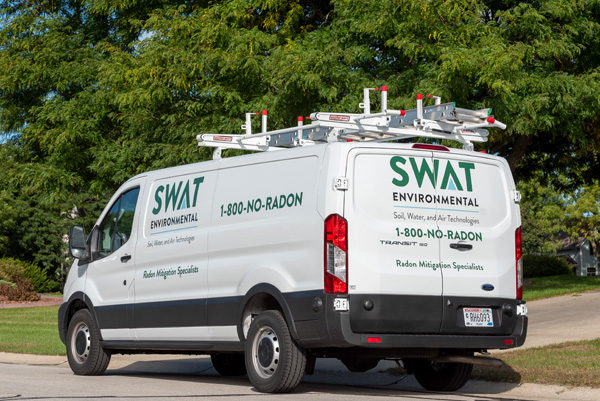Radon mitigation systems utilize a system of pipes and a fan to pull the dangerous radon gas from a structure releasing it into the atmosphere, where it naturally exists. All radon mitigation systems have one goal: reduce or eliminate radon gas exposure inside your home or in your drinking water.
The EPA recommends homes that measure 4.0 pCi/L or higher have a radon mitigation system installed.
We have compiled a list of questions of frequently asked questions to better understand radon mitigation systems.
Your fan is located outside your home OR in your attic based on ANSI-AARST Standards or state requirements.
The fans are warranted for five years and typically last much longer.
Every radon system has a disconnect. Sources of power for the fan are labeled for identification. The location of yours will be specified by your technician.
Yes. In order to keep your radon levels low, it must run continuously and if shut off only briefly for maintenance. Most fans typically use less than 2 amps.
Depending on the fan type and your local electrical costs, fans generally cost anywhere from $25 – $100/year to run and are very efficient.
It varies from home to home. In some case’s it just comes down to how sensitive you are to white noises. However, it is quieter than your other utilities and is usually comparable to a refrigerator fan.
The system is designed to handle moisture. Our pipe is glued and has a natural slope down towards our collection point/sump pit. The constant air pressure deters animals away.
Annually your system will only collect about 3 gallons of water. On a daily basis, your system has the potential to remove anywhere from 3 to 20 gallons of moisture a day. A cap will block that moistures ability to get removed from the system and can considerably shorten the life of your fan.
Some cracks don’t communicate with the soil below it and therefore aren’t necessary to be sealed.
The pressure gauge shows that the fan is operating and has instructions located on the sticker next to it. It also provides the technician with valuable information as to how much air the fan is moving from under your home. This gauge is not a measurement of radon levels.
No. Adding a cover to the top of the vent stack is not allowed as a standard installation per ANSI-AARST Standards and state requirements. Often this can plug with ice in northern climates and restricts the airflow that hinders the capability of your system. Remember the fan is continuously running and most critters and debris will avoid the airflow.
The cover is removable, and our radon pipe has a removable fitting to allow the pipe to be removed. The caulking is not permanent and its easiest to gently pry the cover-up with a screwdriver or small pry bar. The cover is also clear for your convenience so you can easily inspect your pump and water level.
We generally ask that customers wait 4-5 days to retest. Starting too soon can show elevated levels that haven’t cleared out yet. If possible, time your test so that you can stop it on a Monday and have it off to the post office without delay. It is also recommended to not wait longer than 30 days.
Sealing openings alone is not a stand-alone solution. It is most effective with an active depressurization system.
The simplest answer may be doing another test to determine if your levels are still high. If they are still high, we have options. We can make additional suction points to spread our pressure field and also increase your fan size to allow more airflow. Dependent on the home this may be adding an additional collection point or larger fan.

